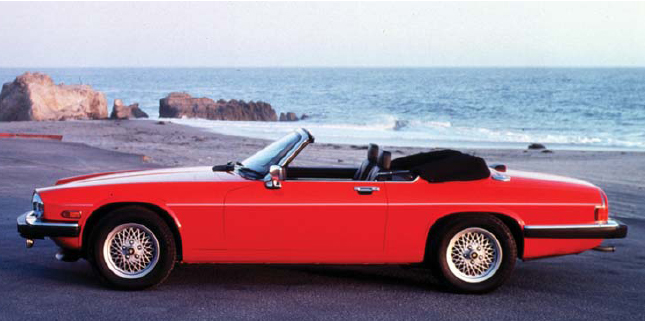
No sooner had the company been floated on the Stock Exchange in mid-1984 than a wave of optimism grew up among Jaguar supporters, staff and enthusiasts. Everything, it seemed, would now be possible. The company, for sure, was well placed, with fine managers, good engineers, and plans for the future. The new boss, John Egan, knew exactly what he wanted to do – but had to come to terms with the fact that he had only limited financial resources.
So far as the public was concerned, the company ploughed ahead, not only by launching the long-awaited new-generation XJ6 in 1986 (this was always coded ‘XJ40’ within the company), but also by commissioning a fine new design and development complex in another part of Coventry, and then by launching the XJ-S Convertible. Sales rose, as did the company’s reputation – but the need for more funds became urgent.
The only way the problem could be solved, it seemed, was for Jaguar to get together again with a larger and more prosperous grouping. This time, though, it would not be a forced union. Discreetly at first, but less so as the weeks passed, company advisers let it be known that Jaguar was on the market. Eventually, and after a bidding battle between General Motors and Ford, in the autumn of 1989 it was Ford which paid approximately £1.6 billion to take complete control.

The first full convertible version of the XJS came along in 1988 and soon became the best-selling derivative in the range.
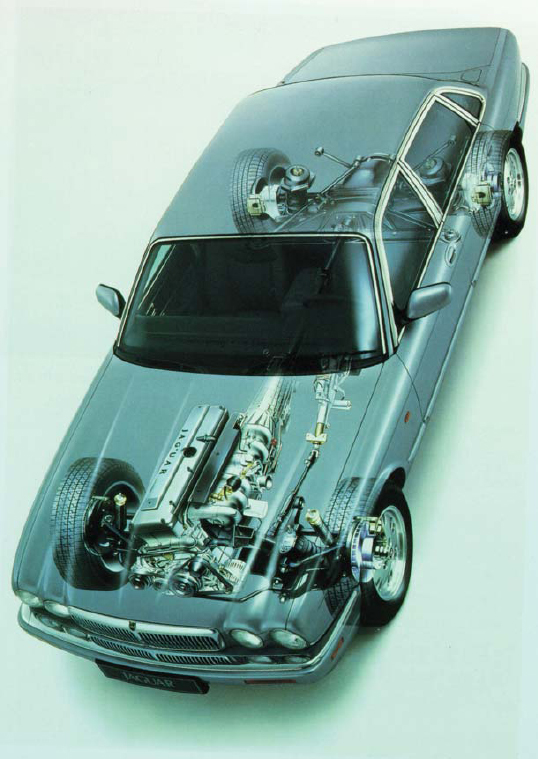
One of many ultra-fast and capable saloons built in the mid-1990s was this XJR derivative of the XJ6, complete with a supercharged six-cylinder engine.
Almost from this point, and certainly as the next two decades proceeded, Jaguar was progressively dominated by its new owner – benevolently in almost every way, but it was definitely subservient to corporate whims and fancies. When Ford managers arrived and swept through the factories, their first reaction was that much modernisation was needed – and they made haste to finance such changes. Furthermore, the pace of technical change, and of the introduction of new products, accelerated.
First, approval came for the magnificent 215-mph XJ220 supercar, which was engineered under Tom Walkinshaw’s control, used a modified version of the turbocharged racing V6 engine, and was to be built at a new small factory near Banbury. Only 350 were planned, but in the end just 271 were sold, for the classic car boom faltered at this time, and many so-called enthusiasts (in some cases, actually ‘investors’) cancelled their orders.
Next the XJ-S, of which ten thousand were being built every year, benefited from a major late-term facelift, not only around the rear style, but in terms of upgraded engines. That launch came in 1991, and kept the car going to 1996 (up to when more than 115,000 XJ-Ss of all types had been built). It was then replaced by the altogether smoother, and less controversially styled, XK8.

Two extremes of ‘Jaguar’: an original-type Swallow sidecar posed alongside a 540-bhp mid-engined XJ220 supercar.
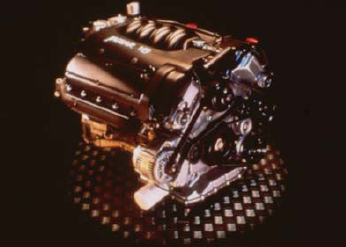
First used in the XK8 sports car, the original and all-new V8 engine made its debut in 1996, and still powered a variety of Jaguars, Land Rovers and Range Rovers in the early 2010s.
The major innovation of this period, however, was the spending of huge amounts of money on the Castle Bromwich factory, where every Jaguar bodyshell was produced, and preparing it for several new generations of saloon car to be made there. Ford then approved the launch of an all-new V8 engine (which would be revealed in 1996), for which they provided production facilities at a massive Ford factory at Bridgend in South Wales. In the meantime there was also a much revised ‘XJ40’ car to be launched with sleeker front and rear styling (Sir William would surely have approved), and then, in the autumn of 1998, the appearance of a new Jaguar S-Type saloon.
Here was real evidence of Ford’s corporate approach to Jaguar, for the entire platform, and much of the S-Type’s superstructure and body style, were shared with a Ford-USA model to be named the Lincoln LS. As well as the modern Jaguar V8 engine, there was also to be a 3-litre V6-engined version of the car, that engine being a modified version of a Ford engine that was in use in many countries and models.

Five generations of Jaguar sports cars, covering more than sixty years (clockwise from left): SS100, XK120, E-Type, XJ-S, and XK8.
Then came the next shock, for BMW (which had taken over the rump of the Rover Group in 1994) then decided to rid itself of that troublesome business, and among other things sold off Land Rover to Ford. That company’s ‘master plan’ soon took shape, in that Ford would soon arrange to use Jaguar V8 engines in the larger Land Rover models, such as the Discovery and the Range Rover, and from there it was only a small corporate step to arrange to use a newly developed turbocharged V6 diesel engine (originally of 2.7 litres, but later of 3.0 litres) in all these models. Shortly, this unit was applied to the S-Type, and proceeded to sell very briskly indeed. The financial press soon learned to discuss Jaguar-Land-Rover as a single corporate unit, for the two managements henceforth operated increasingly closely together.
In the meantime Ford had financed the development of the X-Type, the ‘small’ Jaguar, which proved to be controversial throughout its ten-year career. Launched in 2001, and assembled at a former Ford factory at Halewood, near Liverpool, it was unashamedly based on the platform of the Ford Mondeo, but also enjoyed an intriguing product mix of Jaguar innovations – transverse-mounted engines, front-wheel drive on some versions and four-wheel drive on others, a Ford-based diesel engine eventually, and an estate-car alternative. V6-engined versions were fast and satisfying, but lower-powered types sometimes disappointed. The X-Type helped annual Jaguar sales to reach 100,000 for the first time – but not as high as expected.
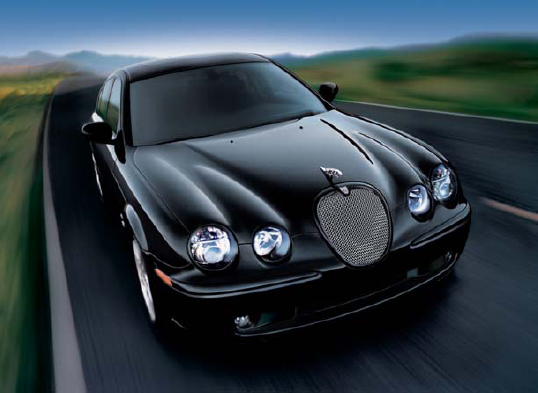
The original S-Type was launched in 1998 and shared much of its design architecture with a Ford-owned Lincoln from the United States. Its platform was later used under the XF.
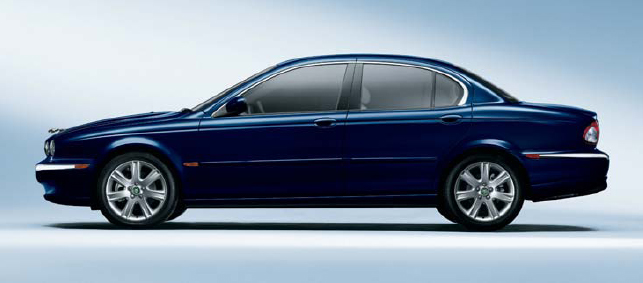
The X-Type was in production from 2001 to 2010. Some versions had four-wheel drive, and some were diesel-powered, both these being innovations for Jaguar.
For the next few years, however, Ford-influenced launches followed in quick succession. First there was the new-generation XJ6 of 2003, which looked very similar to the car it replaced. Then came the second-generation XK8 (looking almost like the previous car) in 2005. This, though, was small-scale news compared with Ford’s eventual decision to abandon the Browns Lane site in 2005, and to concentrate all its future assembly facilities at a much expanded Castle Bromwich factory.
It was there that the next two major launches took place – both of them relatively conventional in engineering, with front engines and rear-wheel drive, but both startlingly beautiful, with fast-back styling of which Sir William would certainly have been proud. The XF of 2008 took over from the S-Type (but retained that car’s platform and basic running gear), while the new XJ of 2010 replaced the previous XJ, which had enjoyed a rather anonymous career of only seven years.
The biggest surprise, though, had already happened, for as Ford’s operations came under pressure, and its policies changed, it decided to sell off Jaguar-Land-Rover, and found that the Indian conglomerate Tata was a very willing purchaser. That was in 2008; Tata apparently paid £1.5 billion for the business, and immediately began reshaping Jaguar-Land-Rover to its own worldwide concepts. With Jaguar, as a brand, now approaching its eightieth birthday, the company seemed to be as well-founded as ever, and the future looked very exciting.
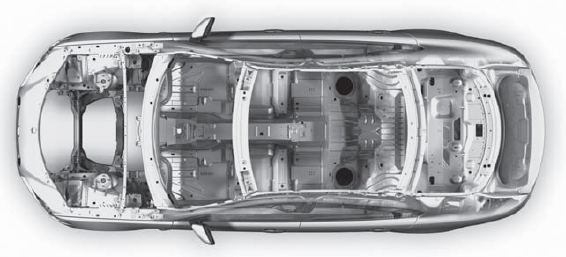
This was the way that Jaguar chose to emphasise the high-tech body structure of the new XF, which used elements of the previous S-Type in its make-up.
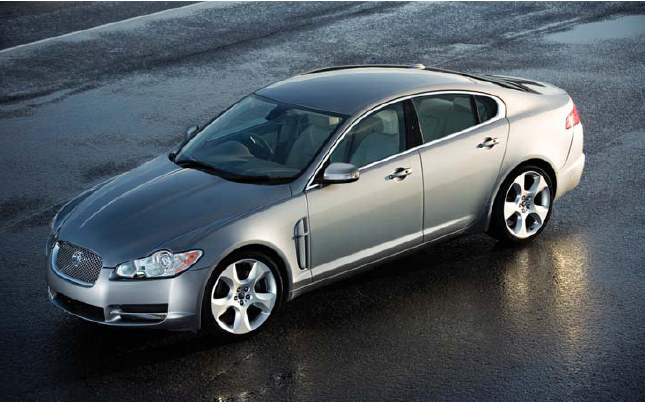
The XF was introduced in 2007, showing off Jaguar’s new style direction, and showcasing the Castle Bromwich factory, where such cars were to be built in the future.